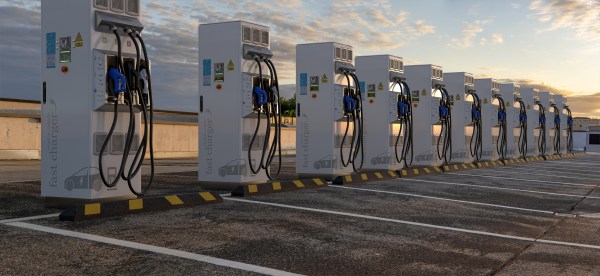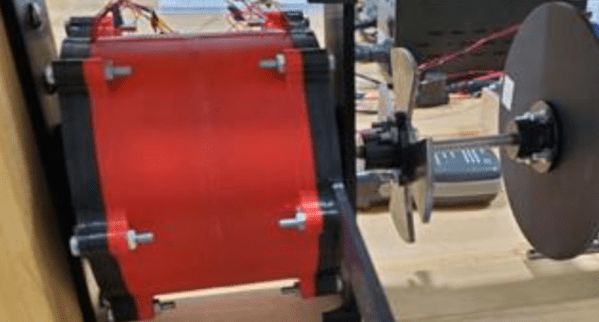Looks like it’s lights out on Mars for the InSight lander. The solar-powered lander’s last selfie, sent back in April, showed a thick layer of dust covering everything, including the large circular solar panels needed to power the craft. At the time, NASA warned that InSight would probably give up the ghost sometime before the end of the year, and it looks like InSight is sticking to that schedule. InSight sent back what might be its last picture recently, showing the SEIS seismic package deployed on the regolith alongside the failed HP3 “mole” experiment, which failed to burrow into the soil as planned. But one bad experiment does not a failed mission make — it was wildly successful at most everything it was sent there to do, including documenting the largest marsquake ever recorded. As it usually does, NASA has anthropomorphized InSight with bittersweet sentiments like “Don’t cry, I had a good life,” and we’re not quite sure how we feel about that. On the one hand, it kind of trivializes the engineering and scientific accomplishments of the mission, but then again, it seems to engage the public, so in the final rinse, it’s probably mostly harmless.
electric vehicle104 Articles
Hackaday Links: December 4, 2022
Well, this is embarrassing! Imagine sending a multibillion-dollar rover to an ancient lakebed on Mars only to discover after a year of poking around at the rocks that it might not actually have been a lake after all. That seems to be the impression of Jezero Crater that planetary scientists are forming after looking at the data coming back from Perseverance since it nailed the landing in what sure as heck looked like a dried-up lake, complete with a river delta system. A closer look at the sediments Perseverance has been sampling reveals a lot of the mineral olivine, which on Earth is rare near the surface because it readily reacts with water. Finding lots of olivine close below the surface of Jezero suggests that it either wasn’t all that watery once upon a time, or that what water was there was basically ice cold. The results are limited to where the rover has visited, of course, and the nice thing about having wheels is that you can go somewhere else. But if you were hoping for clear signs that Jezero was once a lake teeming with life, you might have to keep waiting.
In other space news, we have to admit to taking NASA to task a bit in the podcast a couple of weeks back for not being quite up to SpaceX’s zazzle standards with regard to instrumenting the SLS launch. Yeah, a night launch is spectacular, but not having all those internal cameras like the Falcon has just sort of left us flat. But we should have been more patient, because the images coming back from Artemis 1 are simply spectacular. We had no idea that NASA attached cameras to the solar panels of the Orion spacecraft, which act a little like selfie sticks and allow the spacecraft to be in the foreground with Earth and the Moon in the background. Seeing Earth from lunar distance again for the first time in 50 years has been a real treat, and getting our satellite in the frame at the same time is a huge bonus.
The J1772 Hydra Helps You Charge Two EVs At Once
There are plenty of electric vehicle (EV) chargers out there that are underutilized. This is particularly common where older EVs are involved, where the cars may only be able to charge at a few kW despite the charger being capable of delivering more. [Nick Sayer] regularly found 6.6 kW chargers being used by vehicles that could only draw down 3.3 kW at his work. Thus, he built the J1772 Hydra as a nifty double-adapter to charge two cars at once.
The Hydra comes in two versions. One is a “splitter,” which is designed to be plugged into an existing J1772 AC charger. The other is a version designed for permanent installation to an AC power supply as an EV charger in its own right. Either way, both versions of the Hydra work the same way. In “shared” mode, the Hydra splits the available AC power equally between both cars connected to the charger. When one completes, the other gets full power. Alternatively, it can be set up in “sequential” mode, allowing one car to first charge, then the other. This is great when you have two cars to charge overnight and don’t want to wake up to shift the plugs around.
It’s a neat hack that could be useful if you’re running older EVs that rely on slower AC charging. We’ve seen other DIY EV chargers before, too. Expect hacking in these areas to become more commonplace as EVs grow in popularity.
EV Chargers Could Be A Serious Target For Hackers
Computers! They’re in everything these days. Everything from thermostats to fridges and even window blinds are now on the Internet, and that makes them all ripe for hacking.
Electric vehicle chargers are becoming a part of regular life. They too are connected devices, and thus pose a security risk if not designed and maintained properly. As with so many other devices on the Internet of Things, the truth is anything but.
Continue reading “EV Chargers Could Be A Serious Target For Hackers”
Reverse Engineering Reveals EV Charger Has A Sense Of Security
As more and more electric vehicles penetrate the market, there’s going to have to be a proportional rise in the number of charging stations that are built into parking garages, apartment complexes, and even private homes. And the more that happens, the more chargers we’re going to start seeing where security is at best an afterthought in their design.
But as this EV charger teardown and reverse engineering shows, it doesn’t necessarily have to be that way. The charger is a Zaptec Pro station that can do up to 22 kW, and the analysis was done by [Harrison Sand] and [Andreas Claesson]. These are just the kinds of chargers that will likely be widely installed over the next decade, and there’s surprisingly little to them. [Harrison] and [Andreas] found a pair of PCBs, one for the power electronics and one for the control circuits. The latter supports a number of connectivity options, like 4G, WiFi, and Bluetooth, plus some RFID and powerline communications. There are two microcontrollers, a PIC and an ARM Cortex-A7.
Despite the ARM chip, the board seemed to lack an obvious JTAG port, and while some unpopulated pads did end up having a UART line, there was no shell access possible. An on-board micro SD card slot seemed an obvious target for attack, and some of the Linux images they tried yielded at least a partial boot-up, but without knowing the specific hardware configuration on the board, that’s just shooting in the dark. That’s when the NAND flash chip was popped off the board to dump the firmware, which allowed them to extract the devicetree and build a custom bootloader to finally own root.
The article has a lot of fascinating details on the exploit and what they discovered after getting in, like the fact that even if you had the factory-set Bluetooth PIN, you wouldn’t be able to get free charging. So overall, a pretty good security setup, even if they were able to get in by dumping the firmware. This all reminds us a little of the smart meter reverse engineering our friend [Hash] has been doing, in terms of both methodology and results.
Thanks to [Thinkerer] for the tip.
The $300,000 3D Printed Car
We’ve noticed an uptick in cars–especially pricey ones–using 3D-printed parts. However, these are usually small and nonstructural parts with a few exceptions. This isn’t the case with the 2024 Cadillac Celestiq. The $300,000 luxury electric vehicle boasts 115 3D-printed parts, according to a post on [TheDrive].
It appears part of the drive–no pun intended–is to allow ultra customizations for people who need more than a car that costs more than a quarter of a million dollars. For example, if you buy an Escalade — another Cadilac vehicle — you have to tolerate that the switches that operate the window are the same as Joe Sixpack has in his Tahoe. Not so, the Celestiq since it has 3D printed switches that could even be customized for a specific owner. The post mentions that the large steering wheel trim is all printed so having, for example, your name, family crest, or company logo embedded in it would be feasible.
Young Inventor Builds Motor Without Rare Earths
[Robert Sansone] is a 17-year-old from Florida and, like most of us, he likes to tinker. He’s apparently got the time for it because he’s completed at least 60 projects ranging from animatronic hands to a high-speed go-kart. However, his interest in electric vehicles coupled with his understanding of the issues around them led him to investigate synchronous reluctance motors — motors that don’t depend on expensive rare earth magnets. His experiments have led to a novel form of motor that has greater torque than existing designs.
Rare earths are powerful but expensive, costing much more than common metals like copper or steel. Traditionally, synchronous reluctance motors use steel rotors and air gaps and exploit the difference in reluctance — a term for magnetic resistance– to generate rotation. [Robert’s] idea was to replace the air gap with a different material to increase the ratio of reluctance between the rotor and the gap. Reconfiguring the motor to a more traditional configuration shows startling results: the new design generated almost 40% more torque and did so more efficiently, as well.
His work has earned him first prize, and $75,000, in this year’s Regeneron International Science and Engineering Fair. It took 15 tries to get the motor to its current state, something made easier with 3D printing. There are plans for a 16th version that [Robert] hopes will perform even better. We can’t wait to see what he’ll do next.
Electric vehicles have made people look into many motor design topologies. The reluctance motor has been around for a long time, but controlling them has become significantly easier. That’s true of many kinds of motors.
Continue reading “Young Inventor Builds Motor Without Rare Earths”
















